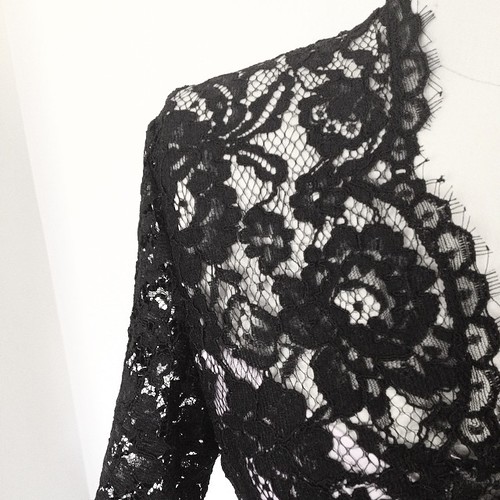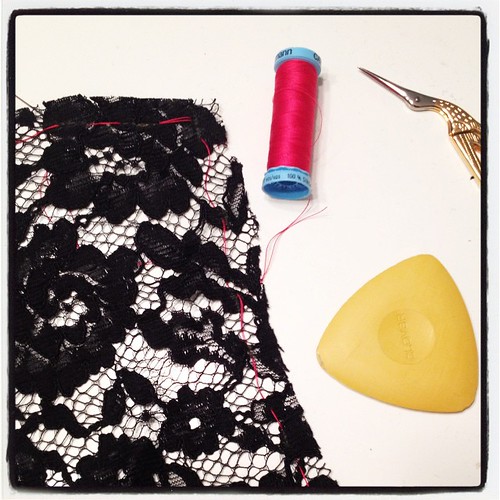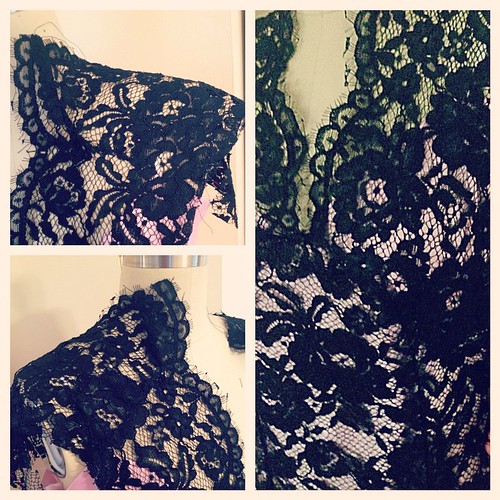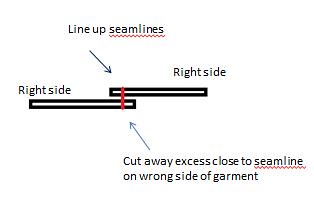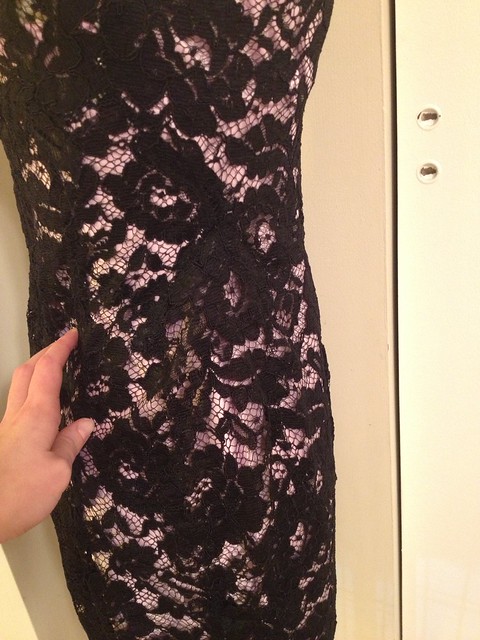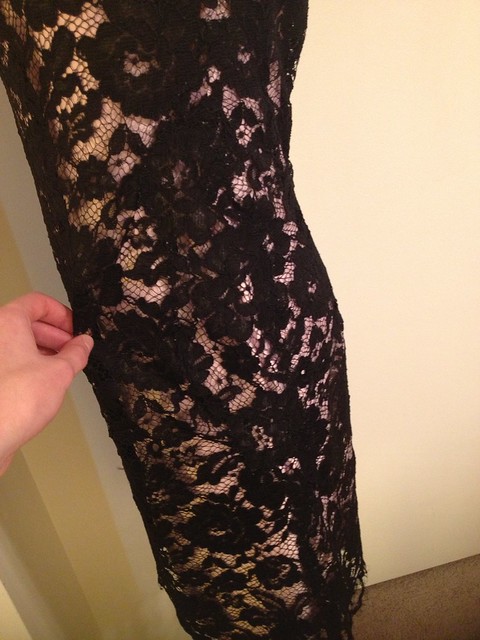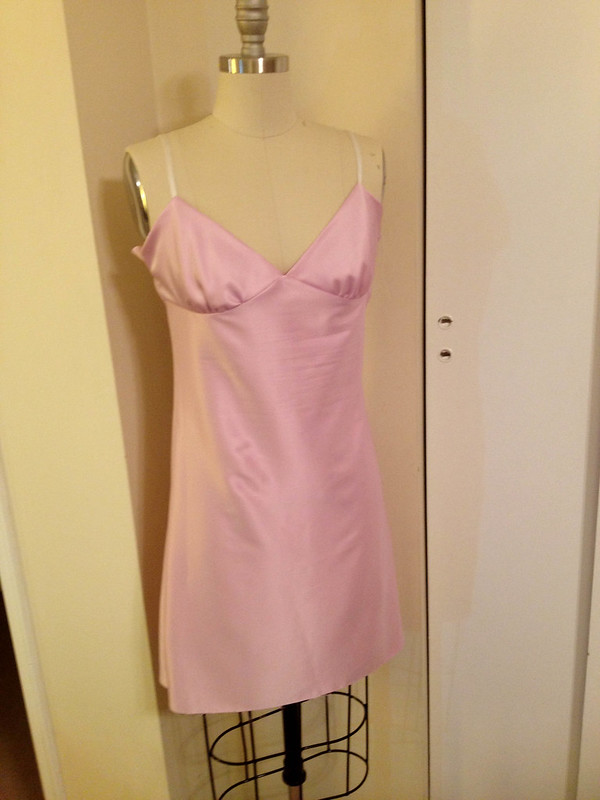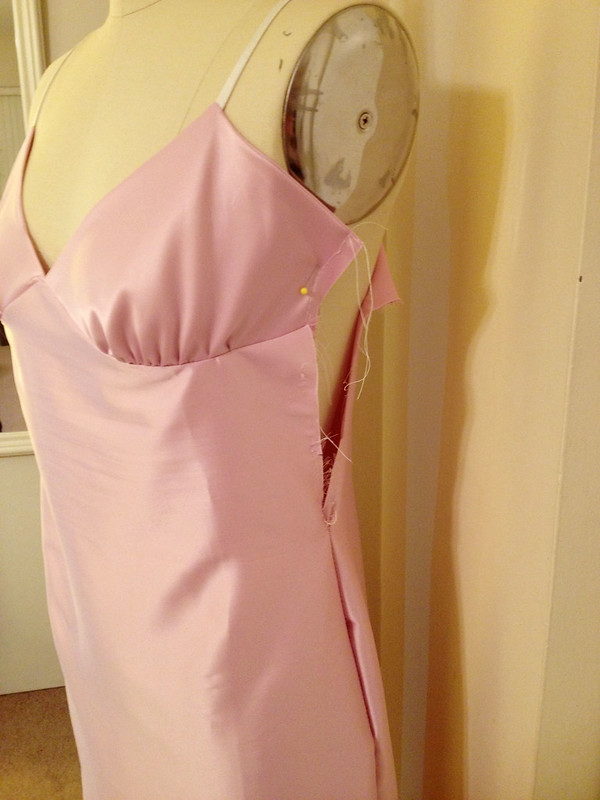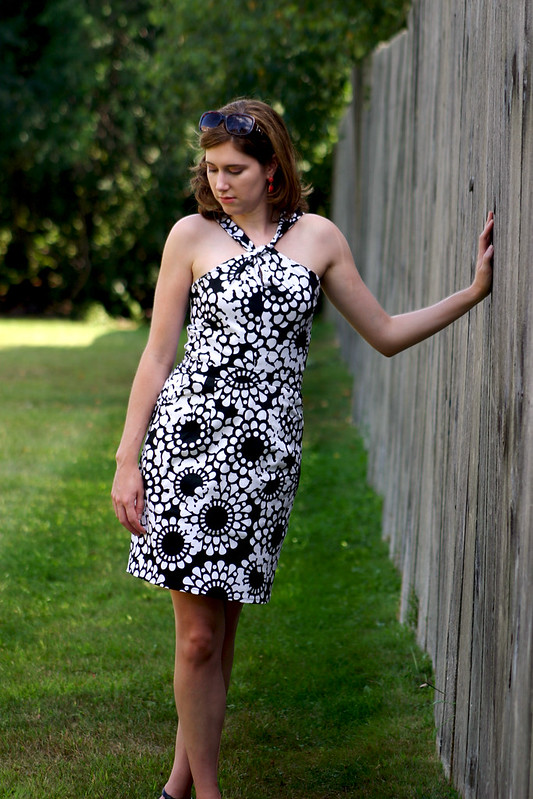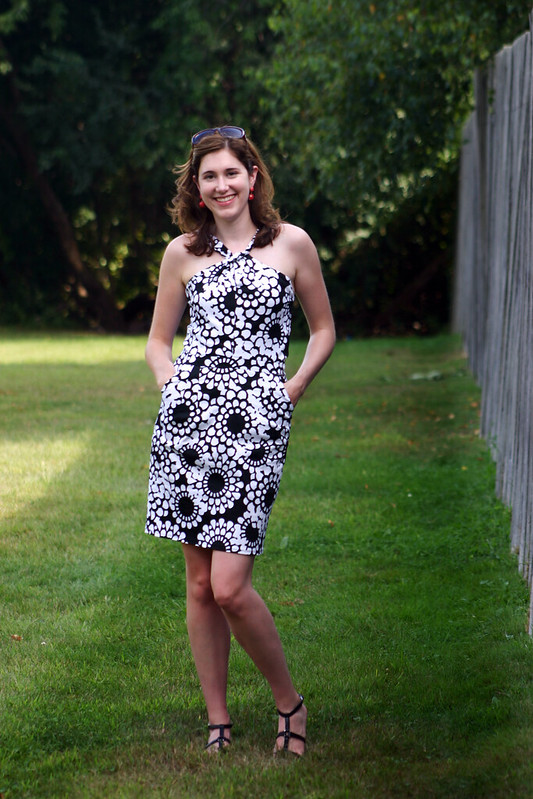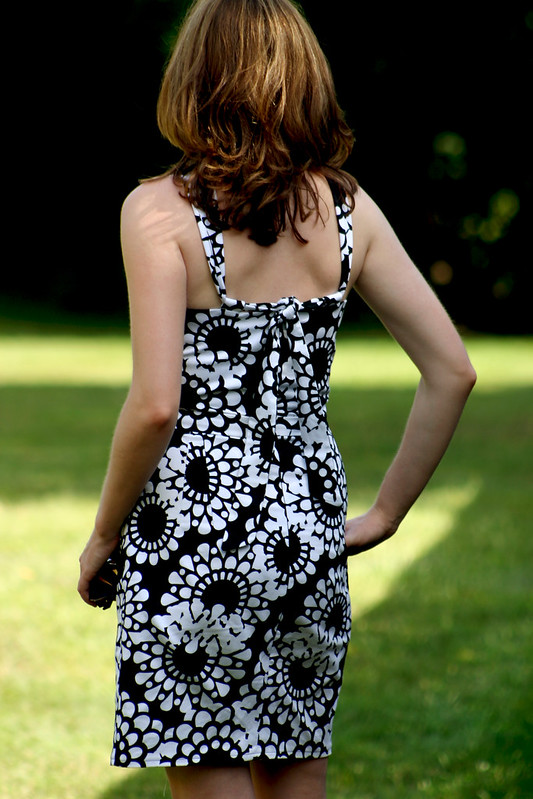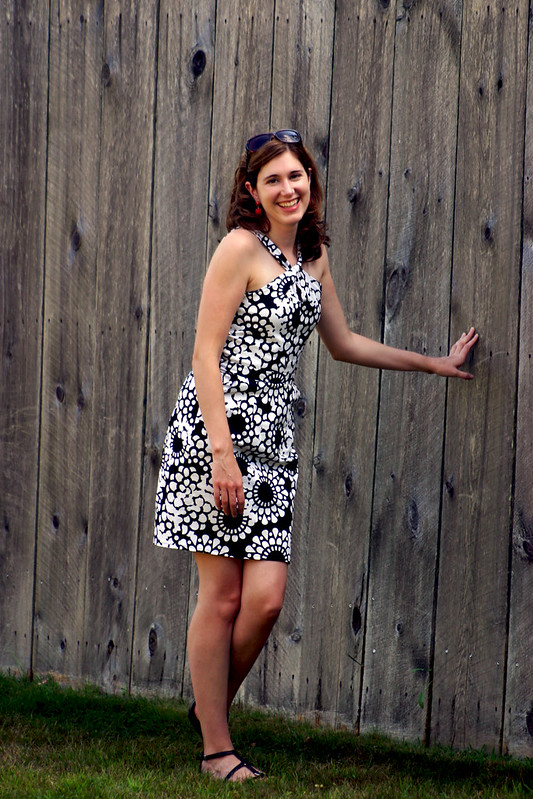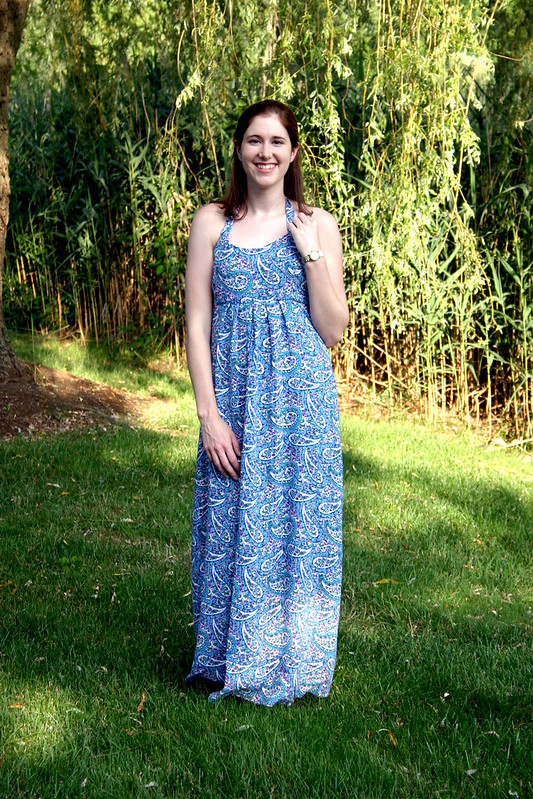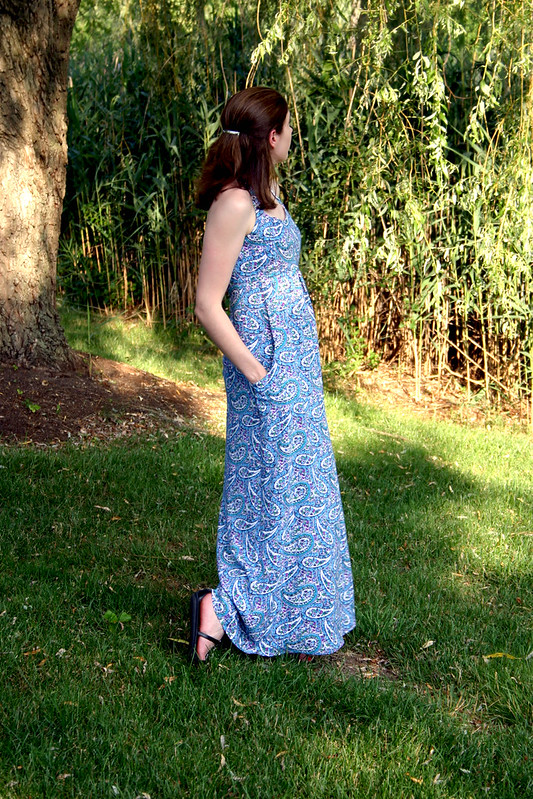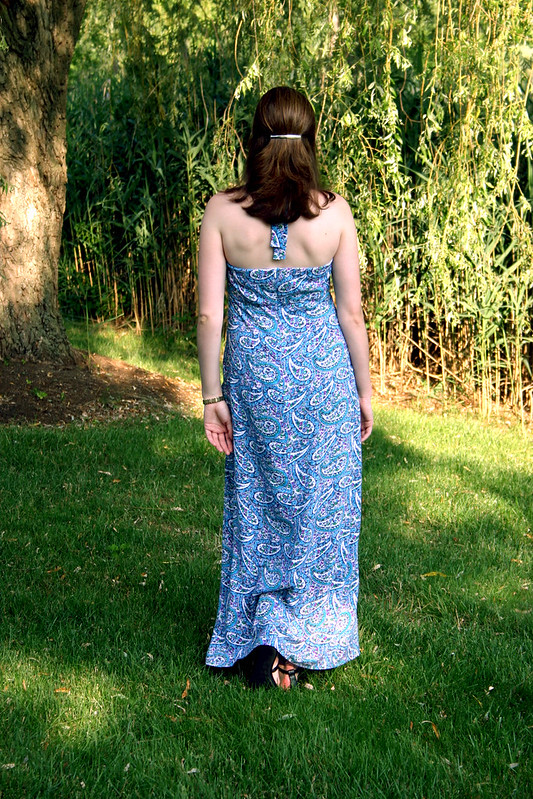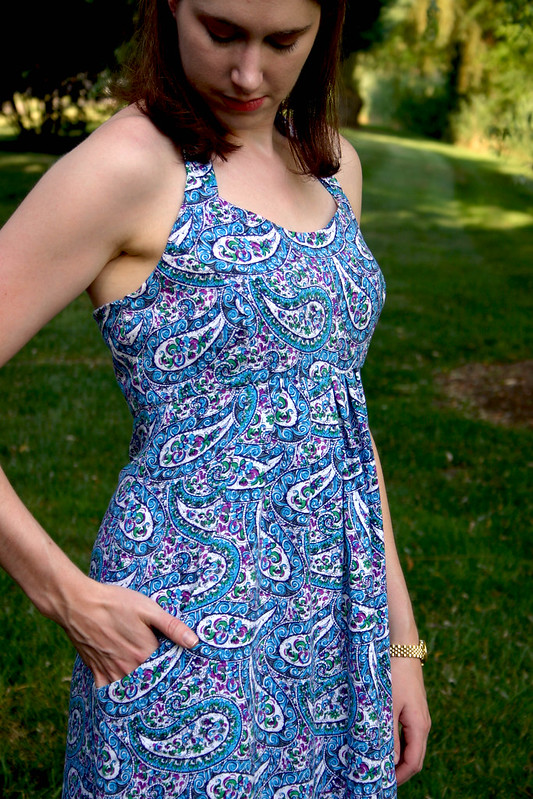
Pattern: Butterick 5454, view B
Fabric: ITY knit from Fabric Place Basement
Watch: Michael Kors
Boots: Bandolino
Lipstick: Nars Funny Face (my fave color!)
I wanted to call this post “flat girls can wear wrap dresses, too!” because yes, with a few alterations, it’s possible to get a wrap dress that fits and doesn’t gape open. Originally, I attempted to make a version of this dress back in 2012 with no success and a lot of gaping – I just didn’t have the energy or motivation to fix yet another dress that was too big in the bust for me. I wrote off wrap dresses as one of those cute dresses that only girls with a chest could wear and would never grace my closet. However, after getting sucked into a marathon of “House of DVF” reruns and seeing all of the beautiful wrap dresses gracing the contestants, the idea of making a wrap dress consumed my sewing thoughts
and I needed to conquer my fitting challenges.
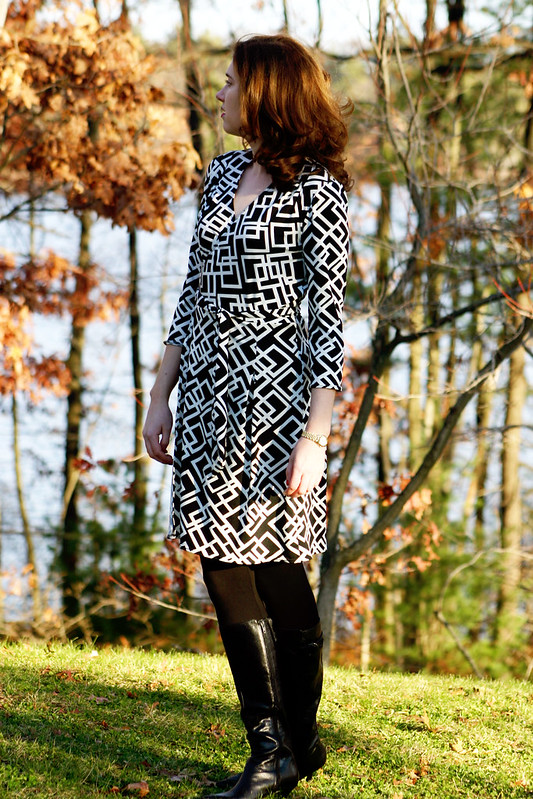
Ladies of the small-busted variety, here’s our fitting challenge when it comes to wrap dresses: the surplice length of the wrap is usually too long. We don’t need a lot of fabric to cross over and cover our chest, which leads to the excess neckline length and extra fabric drooping near the tie. Sure, we can try and tie the dress tighter, but we still don’t get the secure fit of a neckline laying close to the body, or we have to wear a cami underneath the dress for modesty.
Threads Magazine #168 from September 2013 is a great resource for fitting wrap dresses and really helped me get the fit of my dress correct. Here’s what you do: on your pattern, make a small tuck along the neckline above the bust, and another small tuck below the bust – I made two 1/2″ tucks for a total length reduction of 1″. That’s it – excess length is reduced. For more modesty, I also gradually raised the neckline 1/2″ to ensure better coverage and that this dress would be work-appropriate.
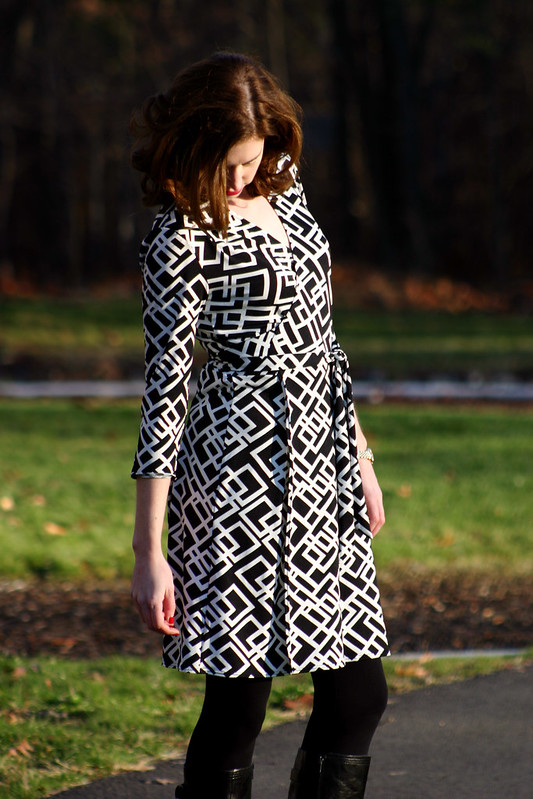
Bias can be tricky to work with, but when you have bias with a knit fabric, watch out – chaos can quickly happen if that sucker isn’t stabilized asap. To get a stable neckline, I used a technique from Sandra Betzina’s Power Sewing book – 1/4″ twill tape. I measured the neckline length on my altered pattern piece and cut two pieces of twill tape that exact length for each side of the neckline, plus one for the back neck (note: she recommends different lengths depending on your bust size). Then, with the knit fabric against the feed-dogs of the machine and the twill tape on top, I eased the neckline onto the length of the twill tape on the wrong side of the bodice front. I was pleased as punch when I tried the dress on, wrapped the neckline, and had zero gape. I feel like I achieved the impossible!
The other part about this pattern I liked, versus other wrap dress patterns that are out there, is the fact that there are no pleats underneath the bust near the ties like with Vogue 8379 or Vogue 8784. With pleats comes extra volume and fabric, and I’m not sure how easy it would be to get that design element to fit on a small bust and not cause gaping.

The skirt on this dress has a slight flare, but is more of a straight skirt style than an A-line skirt seen on some other wrap dresses. There’s some pleats in the skirt in the front and the back, which I didn’t mind since you don’t see them with the pattern of the fabric. Now that I got the bodice to fit, I want to try to match different wrap skirt styles to get different looking dresses – maybe even turn the pleats in the skirt and bodice into gathers?

There’s a whole world of dress options open now, this is just the beginning of wrap dress sewing! I immediately earmarked some jersey fabric that’s been in my stash for a while as new wrap dress projects, and I cut out a turquoise merino wool knit fabric the other night for a winter-ized version. Wrap dresses are like secret PJs: polished looking, but so comfy and easy to wear.
